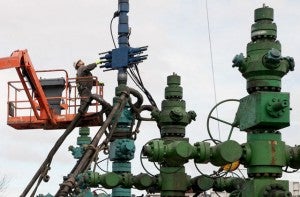This commentary originally appeared on EDF’s Texas Clean Air Matters blog.
With Labor Day behind us, Texans can look forward to a welcome respite from the hundred-degree days of August. The pending arrival of fall may signal milder temperatures for now, but the latest report from John Nielson-Gammon, Texas’ state climatologist, tells a different story about Texas’ long-term climate trend. The study released last month indicates that peak summer temperatures may increase by up to five degrees by 2060. What we once thought of as a unique heat wave (think back to 2011) are likely to become the new normal, and will eventually – according to Nielson-Gammon – be replaced by even hotter temperatures.
At the same time, increasing temperatures would place further severe stress on the state’s energy and water systems. Texas’ recent extreme summers have already plunged much of the state into drought. The latest data released by the U.S. Drought Monitor predict water emergencies could occur in at least nine U.S. cities—five of which are in Texas. And experts expect the drought will persist for years to come as climate change intensifies.
Texas lawmakers must take these grim projections into account as they plan the state’s energy and water futures. Some Texas decision makers are already calling for more fossil-fuel power plants to cover the need for more power (to run all those air conditioners) in light of 2011’s historic summer highs, which will emit more carbon pollution into the air and add to the warming. These same Texas lawmakers insist we should keep our heads in the sand, ignore the mounting evidence pointing to a new climate normal and do nothing to alleviate or adapt to the problem. Read More














